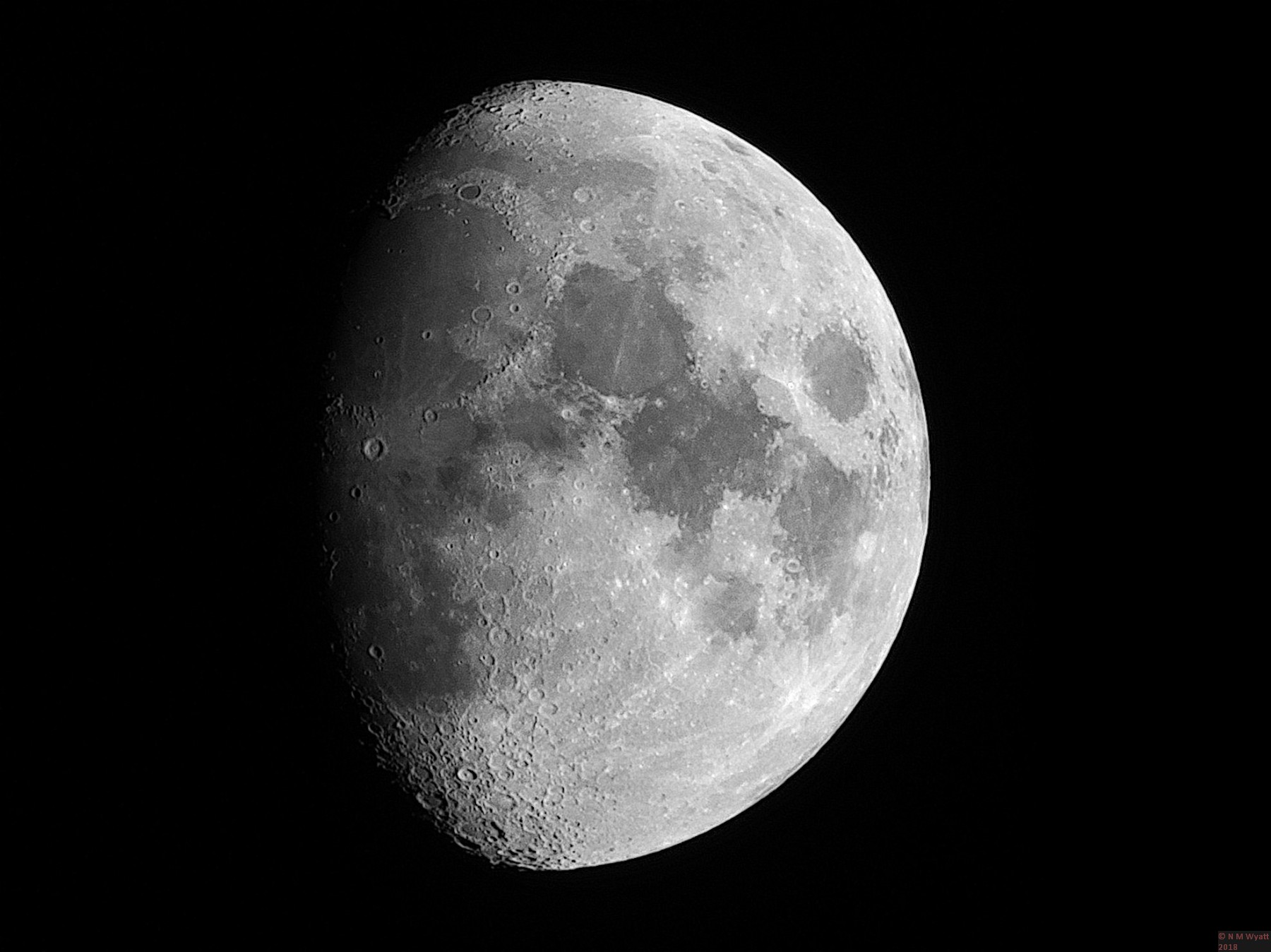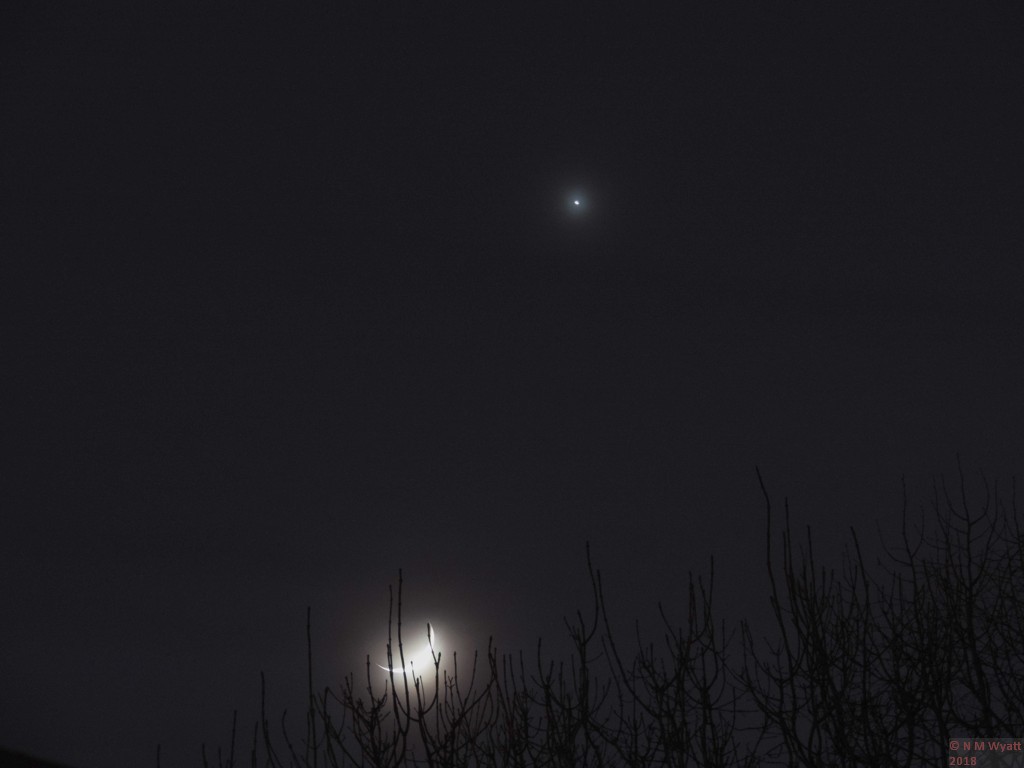If you find this website useful, please check out my books or visit my Amazon Author page. Or even Buy Me a Coffee!
Astronomy
Astrophotography
You are never too old to learn, and one of the thing that has opened my eyes has been discovering the quality of astronomical images that can be produced by amateurs with very modest equipment. By using digital cameras and image processing software it's a realistic ambition to produce images that compare favourably with those produced by the world's biggest telescopes fifty years ago - right in your back yard!
This website does not showcase the best astronomical pictures on the internet! It's a selection of pictures I have taken myself with basic equipment and free software. Producing images like these below, or even better ones, is within your reach!
Most importantly, you don't have to spend a fortune. My first serious scope, mount and tripod cost £180 on Ebay. I spent £40 on a more solid tripod, and about £200 on various bits and pieces including books and an ancient Canon EOS DSLR and a seconhand Microsoft HD Webcam. The results shown before are some of my best so far, and will be updated from time to time.
Perhaps the easiest target in the sky is the moon. You can get good pictures with any long or zoom lens, this is a 'stack' of six pictures taken with an ordinary bridge camera:
A gibbous moon photographed on the isle of Skye.
Follow the links below for introductions to some of the other things you can image in the night sky:
A Conjunction of Moon and Venus
M106 is an intermediate spiral galaxy with an active core that contains a supermassive black hole. Its purple colour is caused by a water vapour megamaser that concentrates microwave emissions. This allowed it to be the first galaxy whose distance was directly determined at about 24 Mly.
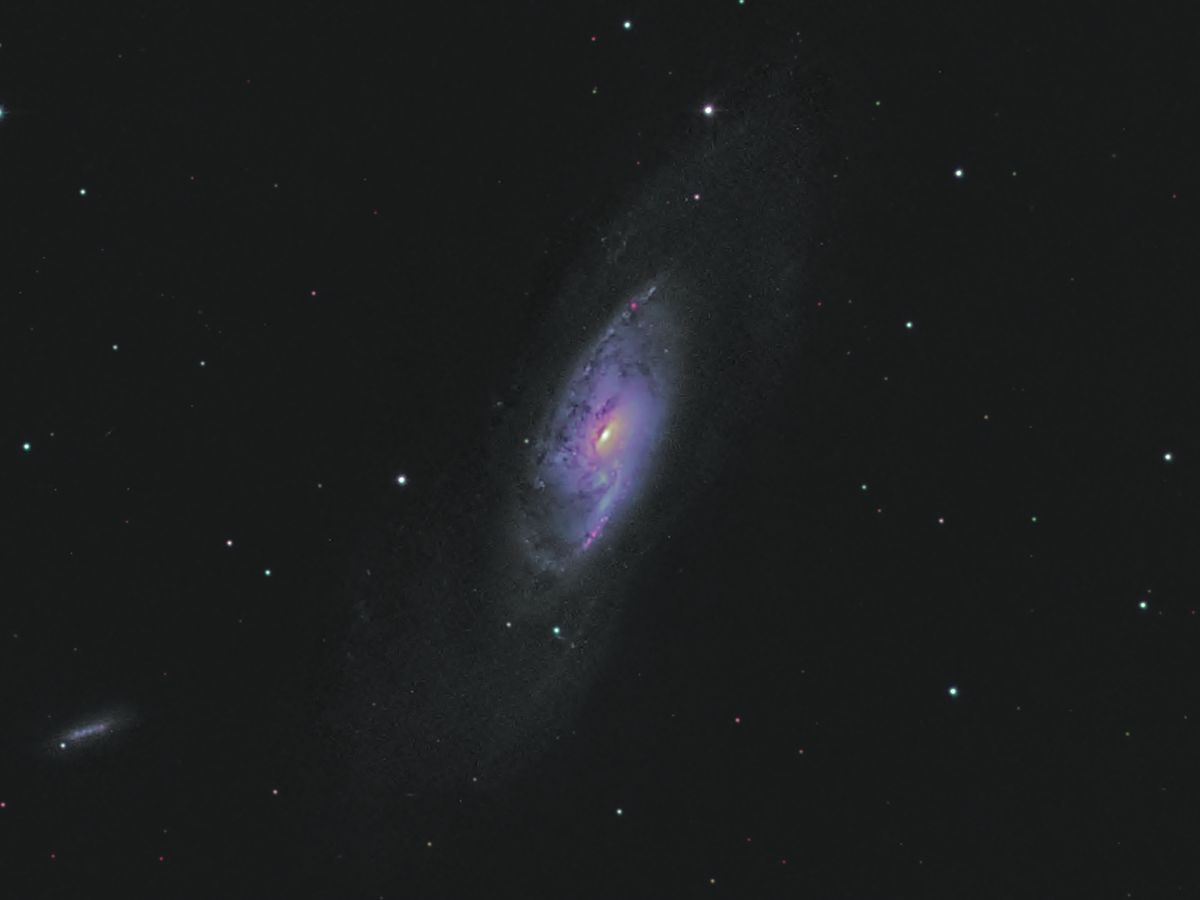
M106 spiral galaxy
- Details
- Category: Astrophotography
M102 is a controversial member of Messier's list. Pierre Mechain claimed it was a duplicate of M101, although the latter looks quite different. The description of M102 by Mechain and location given by Messier do, however, match NGC5866 quite well. This galaxy is seem almost exactly edge on and it is not even clear if it is a spiral or lenticular galaxy. It has a prominent dark dust lane cutting across its centre giving rise to the name 'Cat Scratch Galaxy' and it is also sometimes called the 'Spindle Galaxy'.
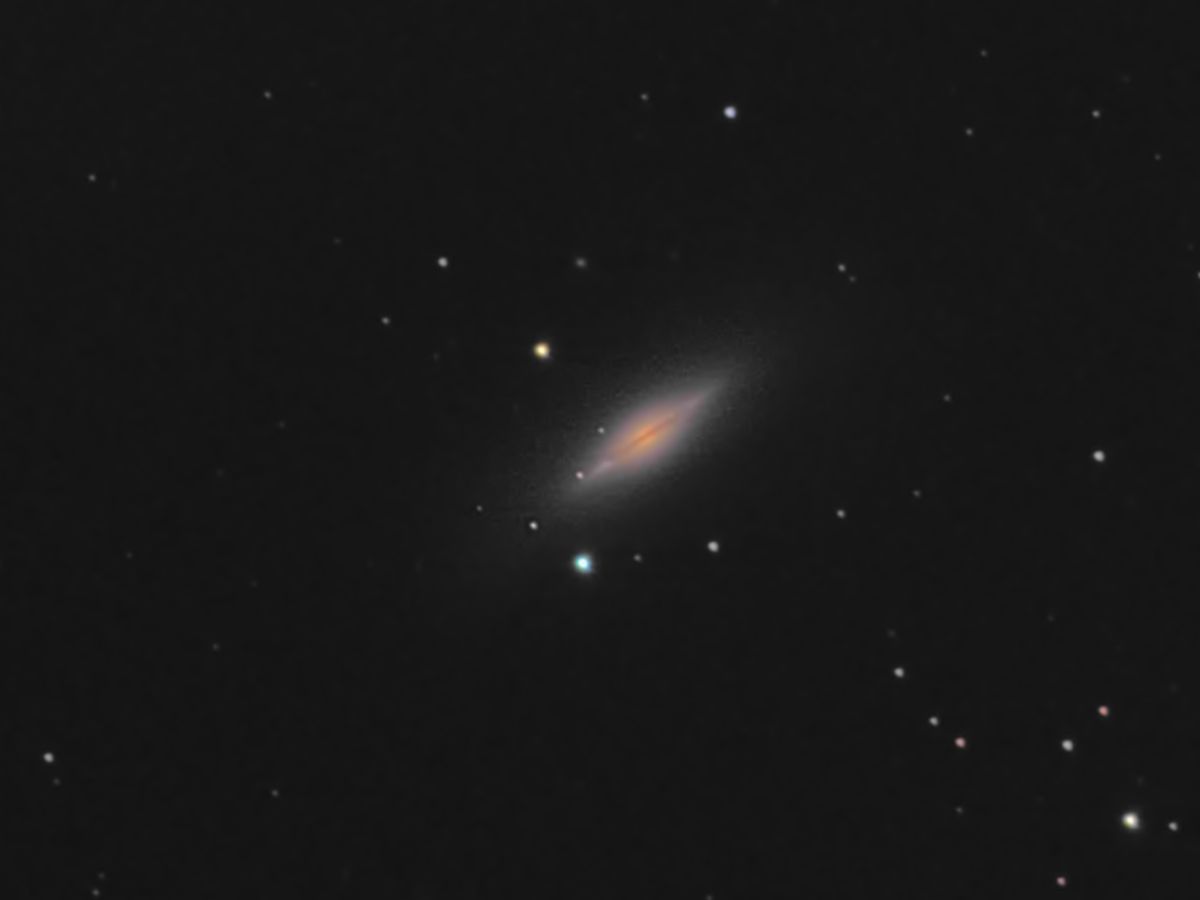
M102(?) the Cat Scratch Galaxy
- Details
- Category: Astrophotography
M99 is a face on grand design spiral galaxy in Coma Berenices, part of the Virgo Cluster. It has loosely wound arms that are markedly asymmetric. It is thought the drawn out arm was affected by a tidal interaction by another object, although exactly which object is the subject of debate.
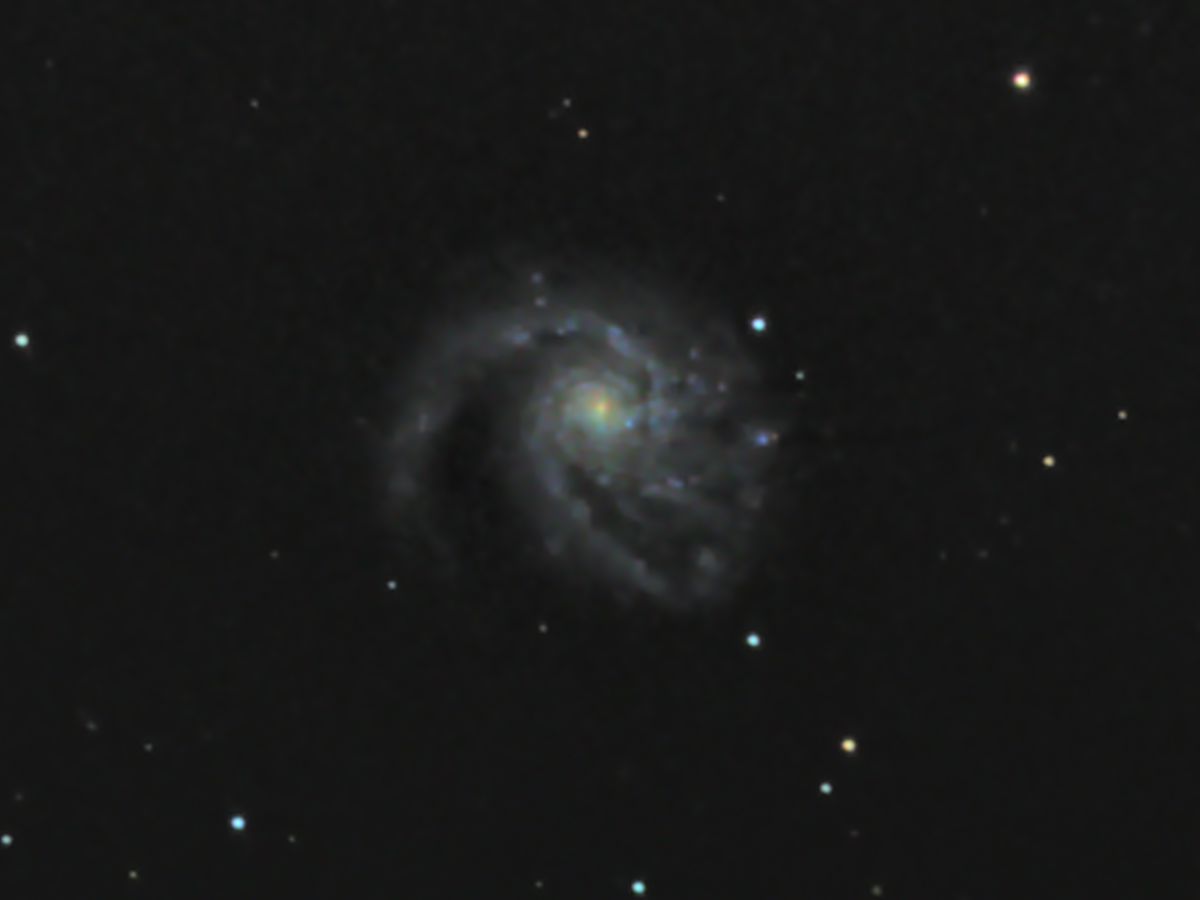
M99 spiral galaxy
- Details
- Category: Astrophotography
M98 is an intermediate spiral galaxy discovered by Pierr Mechain. It has an active core and is blue-shifted (i.e. moving towards the Milky Way) like M87.
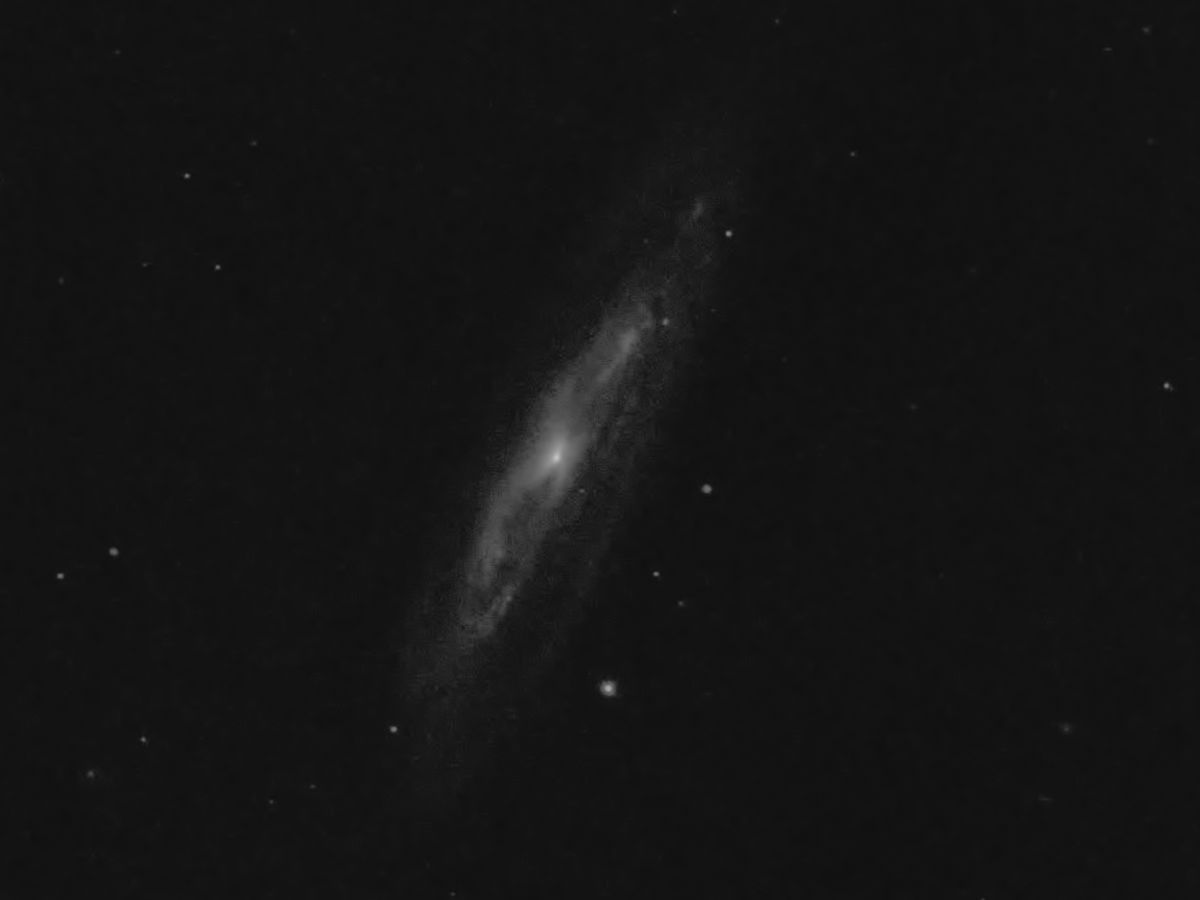
M98 spiral galaxy
- Details
- Category: Astrophotography
M94 is a face on spiral galaxy in the constellation of Canes Venatici, part of the relatively small M94 group of galaxies. It is classified as a barred spiral but the bar appears as an oval central bulge, the bright pupil of the croc's eye. It is unusual in that it has been calculated to contain very little dark mater in contrast to most galaxies.
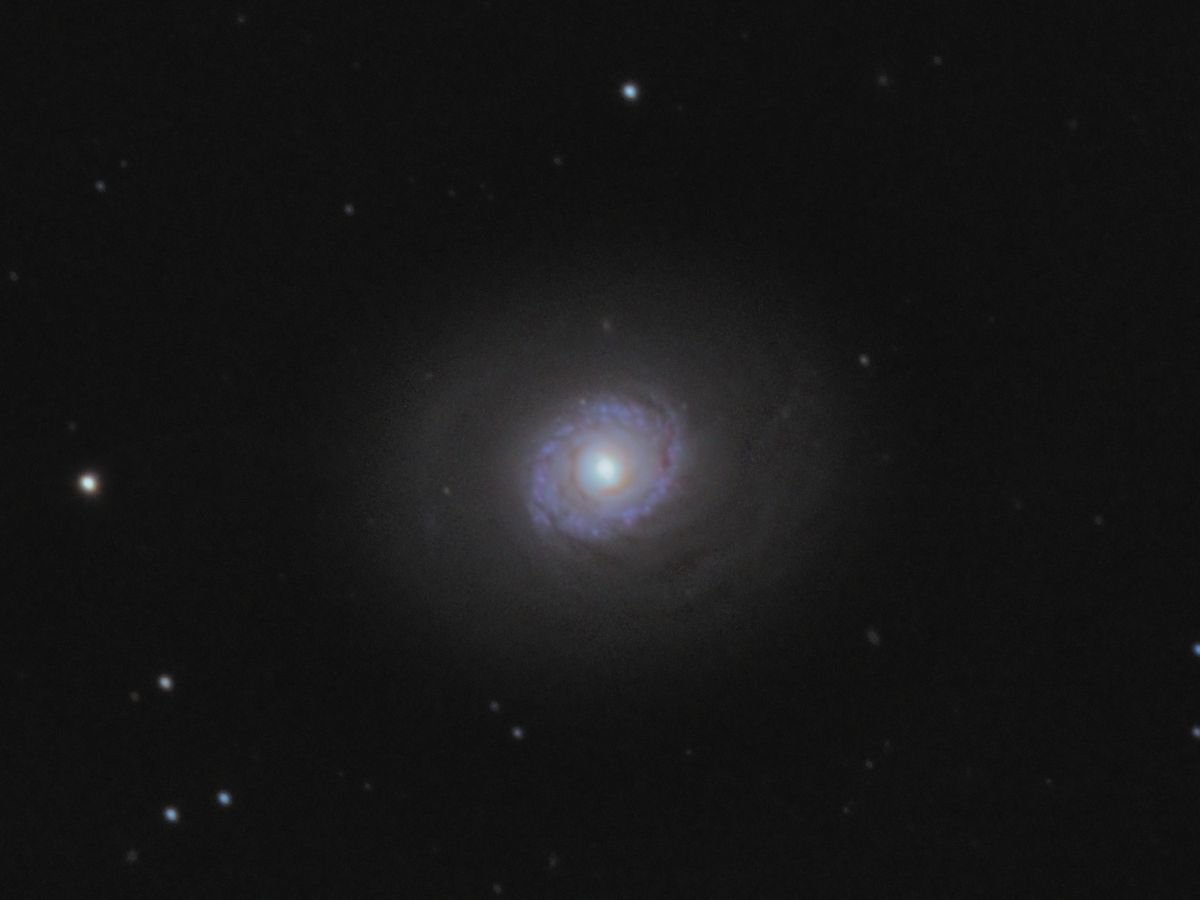
M94 the Croc's Eye galaxy
- Details
- Category: Astrophotography
Page 4 of 23

